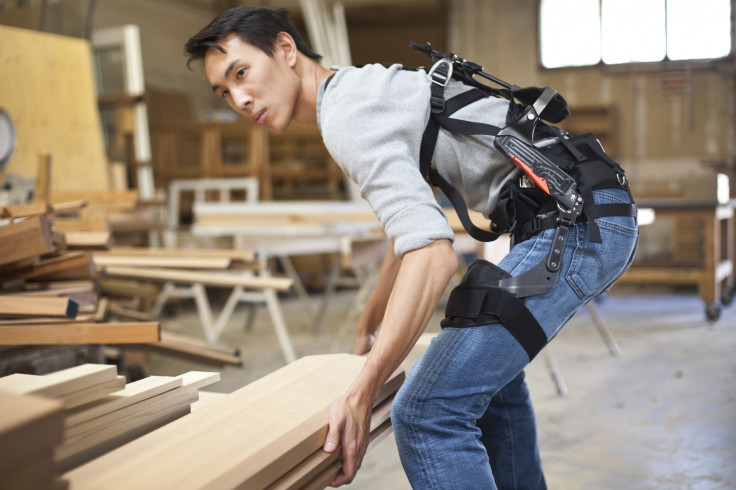UC Berkeley develops three robot exoskeletons to enhance abilities for factory workers
SuitX has developed exoskeletons for the legs, back and shoulders to reduce the force exerted on muscles.

Exoskeleton researchers at the University of California Berkeley (UC Berkeley) have developed three different robot exoskeleton devices that strap on to reduce the amount of force exerted on different parts of the body in order to prevent workplace injuries and boost workers' abilities.
The Modular Agile eXoskeleton (MAX) developed by UC Berkeley spin-off SuitX consists of three components each costing $3,000 (£2,403) that can be used either together as a suit or separately. The three modules, known as backX, shoulderX and legX are designed to help people who work in jobs where they are required to carry out heavy labour such as lifting, carrying, squatting and other repetitive manual tasks.
The exoskeleton, which is now available, reduces the force that the individual is required to exert by 60%, and individually, the shoulder component can support 15lbs of weight per arm and shoulder, while the back component can support 30lbs of weight, and it has been tested out on the job by pipe welders in Ohio.
The exoskeleton was developed in the laboratory of Homayoon Kazerooni, a professor of mechanical engineering who has been working on robotic exoskeletons for many years. The laboratory has already produced four different exoskeleton systems for different purposes, such as the Austin project to offer an affordable aid for individuals with mobility disorders and the Human Universal Load Carrier (HULC) for military applications, which can take up to 200lbs of weight without impeding the wearer.
There's also the ExoHiker, which can take up to 150lbs and carry it for 21 hours without the wearer feeling a thing, and the Berkeley Lower Extremity Exoskeleton (BLEEX), which is designed to help emergency personnel like disaster relief workers carry rescue equipment, first aid supplies, weapons and food over any type of terrain for extended periods of time.
And apart from robot exoskeletons to help people in the workplace, SuitX has commercialised a medical exoskeleton suit called Phoenix based on the Austin system to help people who would otherwise be wheelchair-bound.
This exoskeleton weighs only 27lbs and is one of the world's lightest and most advanced commercial exoskeleton, according to the firm. At $40,000, the suit is also up to four times cheaper than other exoskeletons on the market, and the firm expects to receive approval from the US Federal Drug Administration (FDA) in early 2018.
In February, SuitX won the $1m top prize at the international Robotics for Good competition for developing a medical pediatric exoskeleton for children that suffer from neurological conditions like cerebral palsy and spina bifida, which make walking difficult or impossible.
© Copyright IBTimes 2025. All rights reserved.






















